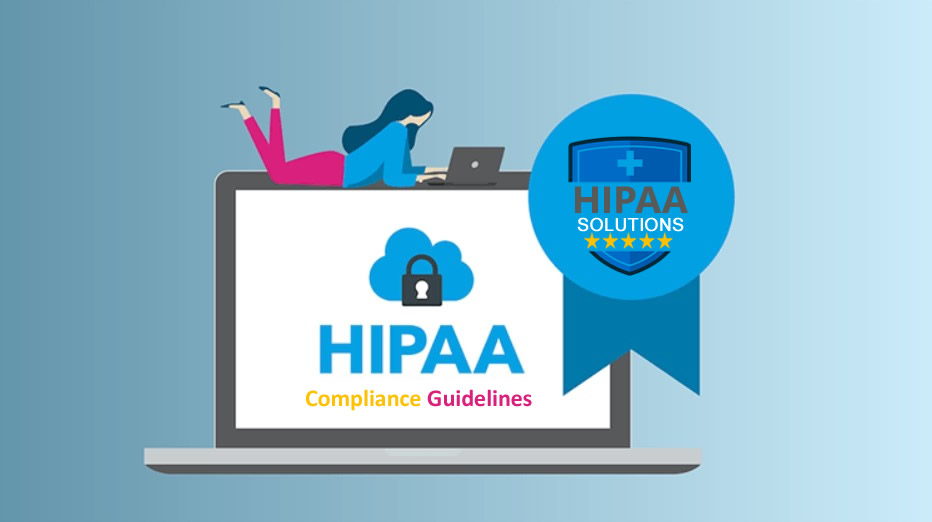
HIPAA Compliance for Physical Therapists
As a physical therapist, ensuring HIPAA compliance within your practice is crucial to protect patient privacy and avoid potential legal issues. In this article, we will explore the key aspects of HIPAA compliance for physical therapists, focusing on maintaining patient privacy and the importance of HIPAA training.
HIPAA Compliance for Physical Therapists
The Health Insurance Portability and Accountability Act (HIPAA) sets the standard for protecting sensitive patient information. Physical therapists must adhere to these regulations to ensure the confidentiality, integrity, and availability of protected health information (PHI) while delivering quality patient care. The three main aspects of HIPAA compliance for physical therapists include:
- Privacy Rule: This rule establishes standards for safeguarding the confidentiality of PHI, whether it is stored, transmitted, or used.
- Security Rule: This rule outlines the requirements for protecting electronic PHI (ePHI) through administrative, physical, and technical safeguards.
- Breach Notification Rule: This rule requires healthcare providers to notify patients, the Department of Health and Human Services (HHS), and, in some cases, the media, if there is an unauthorized access, use, or disclosure of PHI.
Physical Therapy Privacy
Respecting patient privacy is a core principle for physical therapists. Here are some best practices for maintaining patient privacy in your practice:
- Limit Access to PHI: Ensure that only authorized personnel can access PHI, and implement role-based access controls to limit the information staff can access based on their job function.
- Secure Communication: When discussing patient information, do so in private areas to avoid accidental disclosure. Use secure messaging systems and encrypted email when communicating with patients or other healthcare providers electronically.
- Safeguard Records: Store physical records in a locked room or cabinet, and use secure passwords and encryption for electronic records.
- Implement a Privacy Policy: Develop a privacy policy outlining your practice’s commitment to protecting patient information, and ensure all staff members are trained in the policy’s implementation.
- Conduct Regular Audits: Regularly audit your practice’s compliance with privacy regulations to identify potential issues and ensure continuous improvement.
HIPAA Training for Physical Therapists
HIPAA training is essential for physical therapists and their staff to understand and comply with the regulations. Comprehensive training should cover the following topics:
- Overview of HIPAA: Staff should be educated on the basics of HIPAA, including the Privacy, Security, and Breach Notification Rules.
- PHI and ePHI: Training should clarify what constitutes PHI and ePHI and the responsibilities of the practice in safeguarding this information.
- Patient Rights: Ensure your team understands patients’ rights under HIPAA, such as the right to access their PHI, request amendments, and receive a notice of privacy practices.
- Reporting Violations: Train staff on the proper procedures for reporting suspected HIPAA violations or breaches, both internally and to the HHS Office for Civil Rights.
- Regular Updates: Offer ongoing training to keep staff up-to-date on any changes to HIPAA regulations and to refresh their understanding of compliance requirements.
The healthcare industry is constantly evolving, and physical therapy practices must adapt to maintain compliance with regulations like the Health Insurance Portability and Accountability Act (HIPAA). One crucial aspect of HIPAA compliance involves protecting patient information, known as Protected Health Information (PHI). This article will discuss the importance of managing PHI in physical therapy, the HIPAA Security Rule’s implications, and how to prevent and respond to HIPAA breaches in the physical therapy setting.
Physical Therapy PHI (Protected Health Information)
Protected Health Information (PHI) is any information that can be used to identify a patient and is created, used, or disclosed during the provision of healthcare services. In physical therapy, PHI may include a patient’s name, address, phone number, email, date of birth, social security number, medical history, treatment plans, and billing information.
Physical therapists must maintain the confidentiality, integrity, and availability of PHI in compliance with HIPAA regulations. This involves safeguarding electronic, paper, and oral communications that contain PHI, as well as ensuring that only authorized personnel access patient information. Implementing secure storage solutions, encryption, strong passwords, and employee training on HIPAA regulations are vital steps to protect PHI in physical therapy practices.
HIPAA Security Rule in Physical Therapy
The HIPAA Security Rule establishes standards for protecting electronic PHI (ePHI) by requiring physical, administrative, and technical safeguards. Physical therapists must comply with these standards to prevent unauthorized access, maintain data integrity, and ensure the availability of ePHI.
Physical safeguards include securing the physical environment where ePHI is stored or accessed, such as implementing access controls, surveillance cameras, and secure workstations. Administrative safeguards involve creating policies and procedures for ePHI management, including risk assessment, employee training, and contingency planning. Technical safeguards encompass the use of technology to protect ePHI, including encryption, access control, and audit controls.
Regular risk assessments and staying updated on the latest security measures are crucial for ensuring compliance with the HIPAA Security Rule in physical therapy practices.
HIPAA Breach in Physical Therapy
A HIPAA breach occurs when unauthorized access, use, or disclosure of PHI compromises the security or privacy of the information. Physical therapists must take proactive steps to prevent breaches, such as implementing strong security measures, regularly monitoring and updating systems, and training employees on HIPAA regulations and potential threats.
If a breach occurs, the physical therapy practice must follow the HIPAA Breach Notification Rule. This involves notifying affected individuals, the Department of Health and Human Services (HHS), and, in some cases, the media. Physical therapists must also conduct a thorough investigation to identify the cause of the breach, implement corrective actions, and document the incident and its resolution.
Telehealth and HIPAA for Physical Therapists
Telehealth has become an increasingly popular method for physical therapists to connect with their patients remotely. This approach offers numerous benefits, such as increased accessibility, reduced travel time, and the ability to provide care to patients in rural or underserved areas. However, to maintain HIPAA compliance, physical therapists must take specific steps to safeguard patient privacy and the security of their Protected Health Information (PHI).
- Secure Communication Channels: Use secure video conferencing platforms that provide end-to-end encryption to ensure the privacy of patient data during telehealth sessions. It is essential to choose a platform that is both user-friendly and HIPAA-compliant.
- Obtain Informed Consent: Inform your patients about the benefits, risks, and privacy considerations associated with telehealth. Obtain their written consent before initiating any telehealth sessions.
- Train Your Staff: Ensure that all staff members involved in telehealth sessions are well-trained in HIPAA regulations and know how to maintain patient privacy during virtual appointments.
- Conduct a Risk Assessment: Regularly assess your telehealth services for potential security risks and take necessary steps to mitigate them.
HIPAA Compliant Software for Physical Therapy
To further support your practice’s HIPAA compliance, it is crucial to select the right software solutions that prioritize security and privacy. Here are some top HIPAA-compliant software options for physical therapy practices:
- TheraNest: TheraNest is an all-in-one practice management software that offers secure telehealth, scheduling, billing, and documentation capabilities. Its HIPAA-compliant video conferencing feature ensures seamless and secure telehealth sessions.
- SimplePractice: SimplePractice is a popular software solution for healthcare professionals, including physical therapists. It offers a user-friendly platform with features such as secure messaging, appointment scheduling, and telehealth, all designed to be HIPAA compliant.
- TherapyNotes: TherapyNotes is a comprehensive practice management software that caters specifically to mental health and physical therapy practices. It provides a secure platform for telehealth, scheduling, billing, and documentation, ensuring that your practice remains compliant with HIPAA regulations.
- PT Wired: PT Wired is a physical therapy-specific software solution that offers a secure, HIPAA-compliant patient portal, exercise prescription, and telehealth capabilities. This platform helps you streamline your practice while prioritizing patient privacy.
HIPAA Audits in Physical Therapy
HIPAA audits are designed to assess compliance with the Health Insurance Portability and Accountability Act (HIPAA), which sets forth privacy and security standards for the management of protected health information (PHI). In the context of physical therapy, this means that your practice must be prepared to demonstrate adherence to the following aspects of HIPAA:
- Privacy Rule: Safeguarding the confidentiality and privacy of PHI.
- Security Rule: Implementing adequate technical, administrative, and physical safeguards to protect electronic PHI.
- Breach Notification Rule: Promptly notifying affected individuals and relevant authorities in case of a PHI breach.
To prepare for a HIPAA audit in your physical therapy practice, consider the following steps:
- Conduct a risk assessment: Regularly assess your practice’s current policies and procedures to identify potential vulnerabilities and risks to PHI. This will help you prioritize areas that need improvement and allocate resources accordingly.
- Train your staff: Ensure that all members of your team are well-versed in HIPAA requirements and their responsibilities regarding patient privacy and data security. Regular training sessions and updates can help keep everyone on the same page.
- Document your efforts: Maintain thorough documentation of your HIPAA compliance efforts, including policy updates, staff training, and risk assessments. This information will be crucial in demonstrating your commitment to compliance during an audit.
- Review business associate agreements: Make sure your agreements with third-party vendors and service providers include the necessary provisions to ensure their compliance with HIPAA regulations.
Physical Therapy HIPAA Policy
Developing a comprehensive physical therapy HIPAA policy is essential for protecting your practice and your patients’ privacy. Here are some key components to include in your policy:
- Access controls: Define the roles and responsibilities of your staff members and restrict access to PHI on a need-to-know basis. Implement secure authentication methods for accessing PHI, such as unique usernames and strong passwords.
- PHI handling and storage: Establish guidelines for the proper handling, storage, and disposal of PHI, both in electronic and paper formats. This includes encrypting electronic PHI and securely storing physical documents in locked cabinets or rooms.
- Security measures: Implement technical safeguards, such as firewalls, antivirus software, and intrusion detection systems, to protect your electronic PHI from unauthorized access and potential threats.
- Incident response plan: Develop a plan to respond to potential security incidents or breaches. This plan should outline the steps to take in identifying, containing, and resolving the incident, as well as notifying affected individuals and regulatory bodies as required by law.
- Employee training and awareness: Regularly educate your staff on HIPAA requirements and the specifics of your physical therapy HIPAA policy. Ongoing training will help ensure that everyone understands their responsibilities and remains vigilant in protecting patient privacy.
By thoroughly preparing for HIPAA audits and developing a robust physical therapy HIPAA policy, you can significantly reduce the risk of privacy breaches and maintain a high level of trust with your patients. Keep in mind that HIPAA compliance is an ongoing process, and it’s essential to continuously review and update your policies and procedures to stay in line with evolving regulations and best practices.




